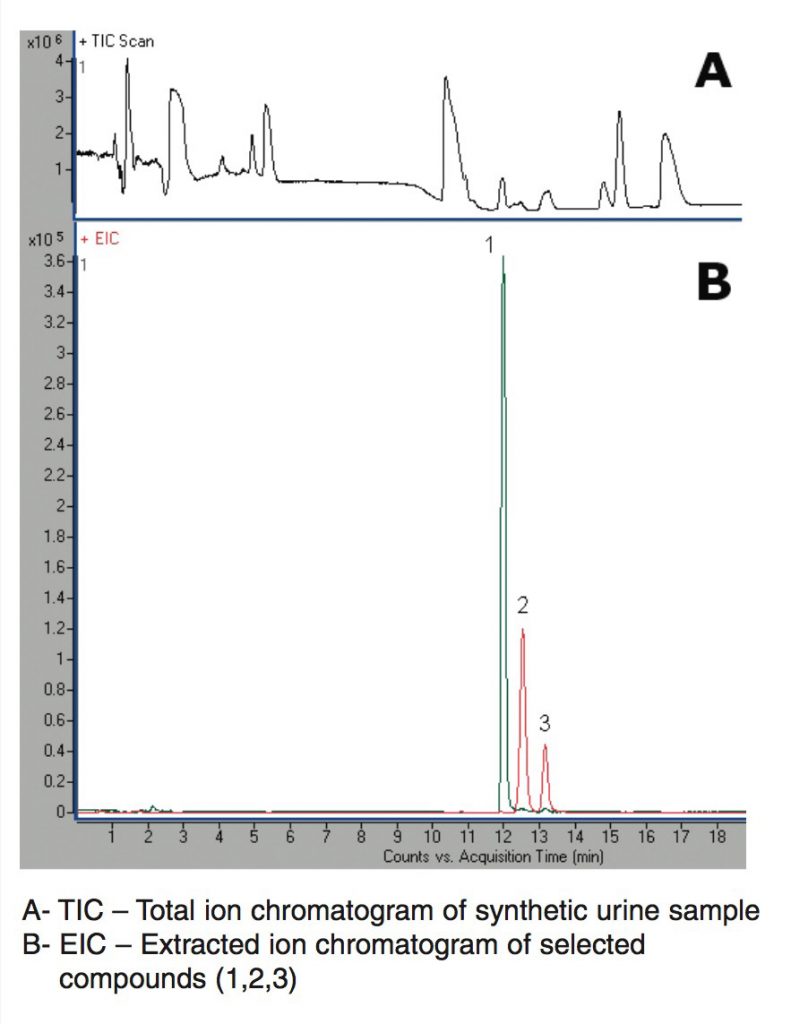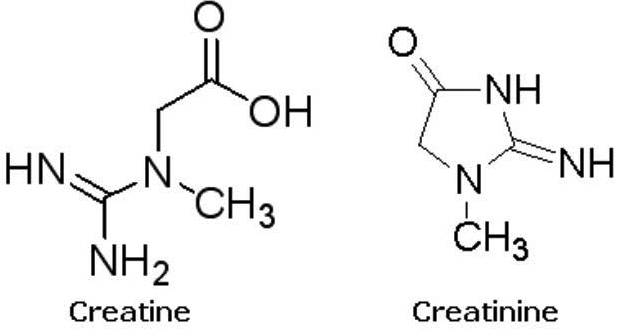Monitor Important Molecules Found in Urine
Creatine and Creatinine can be very difficult to Separate from each other. A simple Gradient with an MS friendly Mobile Phase was used to resolve these two compounds. In addition 4-Hydroxyproline which has a very similar mass weight as Creatine was also easily Separated.
This Method takes away guessing from the analysis of metabolites in a complex mixture as shown.
Peaks:
1. Creatinine (Cr) 114.0662 [M+H]+, RT = 11.98 min
2. Creatine (Cm) 132.0768 [M+H]+, RT = 12.52 min
3. 4-Hydroxyproline 132.0655 [M+H]+, RT = 13.16 min
Method Conditions
Column: Cogent Diamond Hydride™, 4μm, 100Å
Catalog No.: 70000-7.5P
Dimensions: 4.6 x 75mm
Mobile Phase:
—A: DI Water / 0.1% Formic Acid
—B: Acetonitrile / 0.1% Formic Acid
Gradient:
| Time (minutes) | %B |
| 0 | 95 |
| 0.2 | 95 |
| 30 | 50 |
| 35 | 50 |
| 35.1 | 95 |
| 40 | 95 |
Flow rate: 0.4mL / minute
Detection: ESI – pos – Agilent 6210 MSD TOF Mass Spectrometer
Sample Preparation: Synthetic Urine
Notes: Cr is a compound that is made primarily in the liver and then transported to muscles where it is used as an energy source. Once in the muscle, some of the Cr is spontaneously converted to Cm. It is important to monitor the Cr / Cm ratio. An increased ratio may be due to several diseases: congestive heart failure or dehydration. It may also be seen with gastrointestinal bleeding, or increased protein in the diet. The ratio may be decreased with liver disease (due to decrease in the formation of urea) and malnutrition. Cr and Cr analogs such as cyclocreatine were found to have antitumor, antiviral, and antidiabetic effects and to protect tissues from hypoxic, ischemic, eurodegenerative, or muscle damage.
Attachment
Creatine, Creatinine & Hydroxyproline Metabolites Analyzed with LCMS 0.2 Mb Download File




